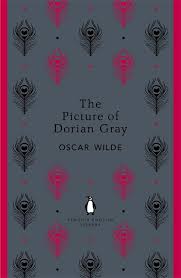“The books that the world calls immoral are books that show the world its own shame.”
The best thing about reading classics is that it is upon the reader on how they enjoy it. There are always multiple layers in every classic literature. If you are lucky or good to decode them, then your reading experience increases tenfold. But if you fail to do so then also you are not at loss, you still have a great story and amazing language to devour.
Synopsis
Dorian Gray is a handsome and fashionable young person who got a portrait for himself. But soon he realized that that portrait will always remain young while he grows old and bears the weight of all his sins. By fancy, he makes a Faustian wish by which he remains young forever while his portrait will decay and grow old.
My Thoughts
This book seemed to me to be full of many Biblical symbols. In the starting chapters of the book, we are exposed to the setting of a garden. The painter created a work of art for which he mentioned that he has “put up too much of himself” in it. Later, Lord Henry corrupted the mind of Dorian Gray in the garden. Doesn’t it sound too familiar to the garden of Eden, where God created man as a version of himself, to be later lured by a serpent which led to his downfall?
Lord Henry was represented as a devil throughout the book, whether it is through his ideologies and lifestyle or occasional symbolism. The chapter where Dorian went to the opium den really gave me chills. The whole atmospherics set up for the journey, the staircase leading to the den, the bartender with red eyes, all gave me the feel of one of the levels of Dante’s Inferno.
Although many suggest that Dorian made a deal with the devil to get eternal youth in exchange for his soul, I feel that the picture is just a representation. The young face which he sees in the mirror gifted by Lord Henry is the reflection of how Henry sees him and the picture is the real mirror of his soul and conscience.
Beside the symbols and representations, Oscar Wilde has done commentary of the astheticism culture that was quite popular in mid to late 19th century in England when this book was published. Astheticism culture believed in creating art for the sake of art as opposed to earlier romantic culture which considered art as a representation of human emotions. And the book painted a picture of ill-effects of leading such life-style.
Conclusion
This is my first book by Oscar Wilde. The language is beautiful but easy to read. Perfect for any beginners of classics.

Be First to Comment